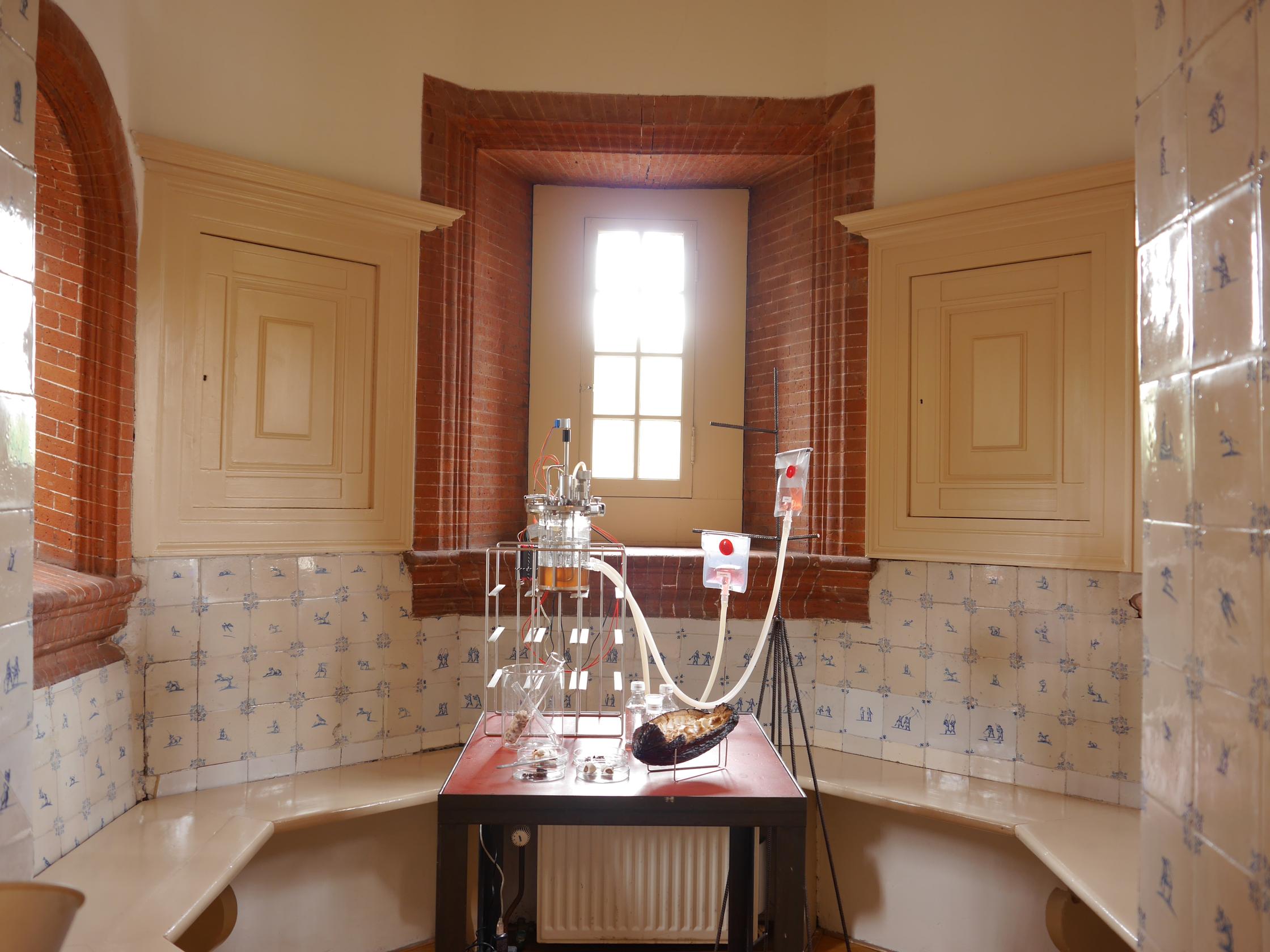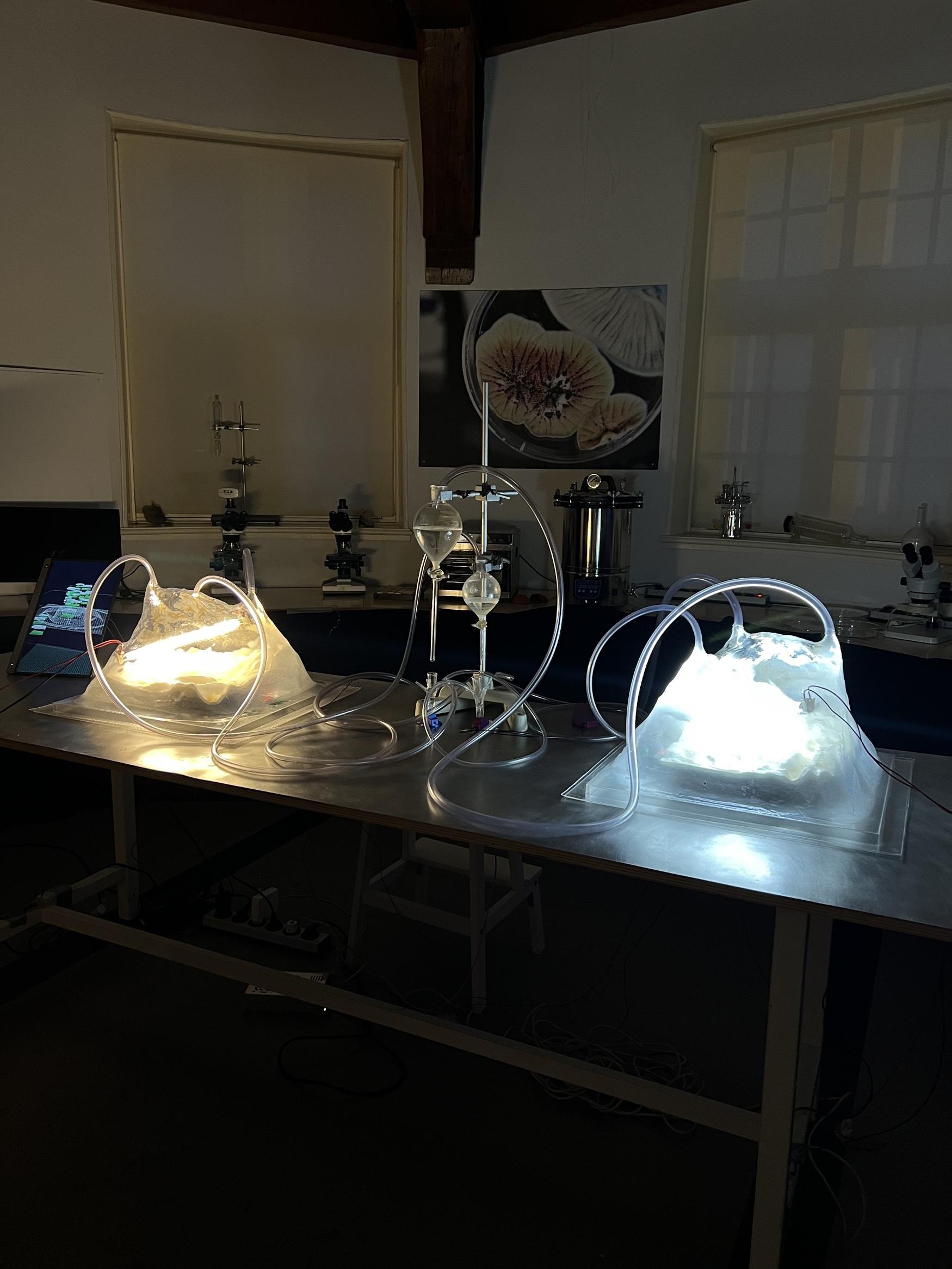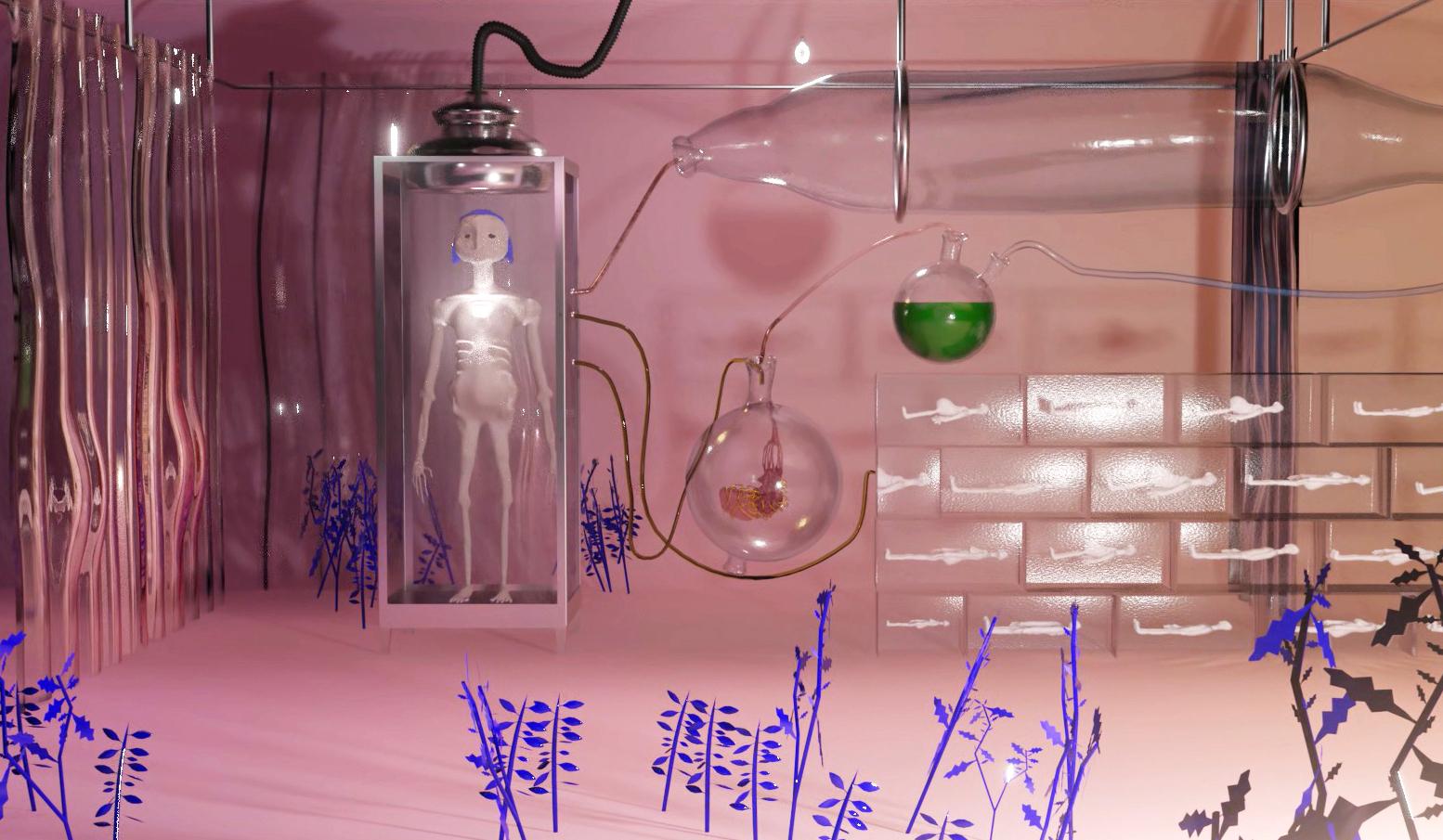We’re very proud to run yearly educational courses in three of our labs: Fabricademy in TexileLab Amsterdam, BioHack Academy in the Open Wetlab and Fab Academy in the Fablab.This year’s Academy Show on Thursday 12 May celebrated the final works of the BioHack Academy students, as presented down below. But first let us introduce to youTextileLab Amsterdam.
TextileLab Amsterdam and Fabricademy
TextileLab Amsterdam is one of the research labs of Waag that looks with a holistic, value driven and embodied approach to textiles, that is personal (that cares) and networked. The designers and researches tackle textiles through five different entry points: materials, tools, processes, systems and culture.
For example: wearable, soft robotics, natural dyeing and e-textiles. Following up is thirteen weeks of personal project development with guidance of the lab’s instructors. Join the next Fabricademy, starting in September 2022! The course is now open for registration.
BioHack Academy 2022
Instructor Kas Houthuijs starts the Academy Show off with a short introduction. The BioHack Academy (BHA) is a modular 10-week course for the creative use of biotechnology. It’s meant for artists and people who are interested in this topic, but who lack a specific background in genetic engineering. You can enter without pre-knowledge of biology or fancy science.

The goal is to develop knowledge on different biological concepts in evolution, genetics and molecular biology. Critical thinking and creativity are used for personal projects that invite the society on genetic engineering and to keep on expanding knowledge on the topic. Eight participants joined in Amsterdam, and the course run simultaneously at two partner labs: BioClub Tokyo (JP) and STEAM New Mexico (U.S).
The course covers five topics, from an introductory level to more difficulty. Each module takes around four hours to fit any day schedule, and you can mix and match to create your personal course.
- How do you work in a lab? This module discusses biosafety and open source documentation. Open source means that you document every part of the creative process and publish it online, to share your knowledge with everyone else who is interested in the topic.
- Do-it-yourself hardware. You can start making a lot of machines yourself to set up your own lab. One doesn’t necessarily need expensive university lab equipment. An option is to find an old machine, take it apart and see how the basic electronics work. This also allows you to understand how to use a machine in a creative way.
- Growing materials. What can you grow, and with what use? One can for example grow bacteria to dye textiles. The students grew kombucha and mycelium under guidance of Margherita Soldati from the TextileLab.
- Genetic modification. Maybe you want to produce a bacteria with a different color, or one that glows? In order to use CRISPR Cas9, the newest technique in genetic modification, you normally need access to big labs or companies. Here, you can use that technique in a very basic lab.
- After gaining the skills, the students started working on their personal projects. It was their turn to think about what is important to them; how they would like to change the world and what made their heart beat faster.
Shirley Niemans – BioCabinet

Shirley (HKU, Utrecht University of the Arts) created the BioCabinet, a solution to the black box of biolabs in art schools: ‘Since universities are bound to strict health and safety regulations, it is notoriously difficult to exhibit growing biological arts and design projects anywhere else than in the lab itself.’ The BioCabinet project is about creating a way to showcase living materials in a portable, controlled and safe environment, so we can take these projects out of the biolab and into the classroom, or the gallery space.
Feel free to get in touch through shirley.niemans ⟨ at ⟩ hku.nl.
Hackitects – Cocobiota
Mary Farwy and Michael Barchini are a designer duo that work under the name of Hackitects. After finishing their masters, they were happy to find the BHA, to learn more about science and technology. They created Cocobiota, an installation with a work in progress of labgrown chocolate that is infused with oxytocine and endorfine.
The artists wonder whether we can use synthetic biology in favor of environmental and social justice, and emotional comfort. They created a synthetic version of the cacao fruit because it has many interesting characteristics: it’s said to be an afrosidiac and has a colonial and historical background with labor injustice. It would also be good to have a lab-produced cocobiota, because the tree is threatened to go extinct and our need for chocolate still supports modern slavery.
Maryfarwy.com / michelbarchini.nl
Lisa Smith – HRMBOT
Human DNA is 99,9% the same. Lisa Smith wanted to visualise how much we are alike, and she therefore created the HRMBOT. The Human Resources Management Robot is a speculative work that matches your organisation with the best possible candidate employee through a DNA match. One can measure the difference between people by pipetting and dyeing a small sequence of DNA. Watch the video below.
'With the HRMBOT we can measure diversity within teams on an objective level. We no long have to look at gender, ethnical background, cultural heritage and education to create a strong, diverse, complementary team.'
Lorena Solís Bravo – Humusities
Lorena is an artist who researched the soil for her work Humusities. In this project she tried to direct our view and other senses towards the invisible aspects of soils such as its smell and the bacteria that aren't visible with the bare eye. What actually is the soil, how does it smell and what do we take from it?
Lorena grew bacteria that she collected from soil samples, and ran it on the distillation machine in order to extract its smell. The video above is a poem she wrote as if different bacteria were talking to us humans.
Karenina van den Crommenacker
Bioartist Karenina van den Crommenacker participated in the BioHack Academy to develop more skills and gain more knowledge for her artistic practice. Her project tries to make microbes more personal and intimate by looking inwards, into yourself and being in symbiosis with all your microbes. She shows a photo where people’s faces are in petri dishes. Are we our microbes or are our microbes us? What does it mean to love ourselves? Do we love our microbes as well? Should we include the invisible and make the love to the invisible more visible? The students made molds and provide kisses. Then they had to kiss theirselves.
Developing bio-engineering courses for the public
This event was made possible by Hybrid Lab Network, a European Commission funded project. For most people, bio-engineering isn’t easily accessible. The application of engineering techniques to biology and medicine is often restricted to scientific labs and companies to which the public doesn’t have access to. Biohacking allows creatives and the public to play with and critically examine bio-engineering.
This is why Waag is currently developing new bio-engineering courses with different modules together with partners Alma Mater Europaea Ljubljana (Slovenia), Aalto University (Finland) and IBMC (Portugal). The goal is to make bio-engineering and biohacking accessible for a general audience.


